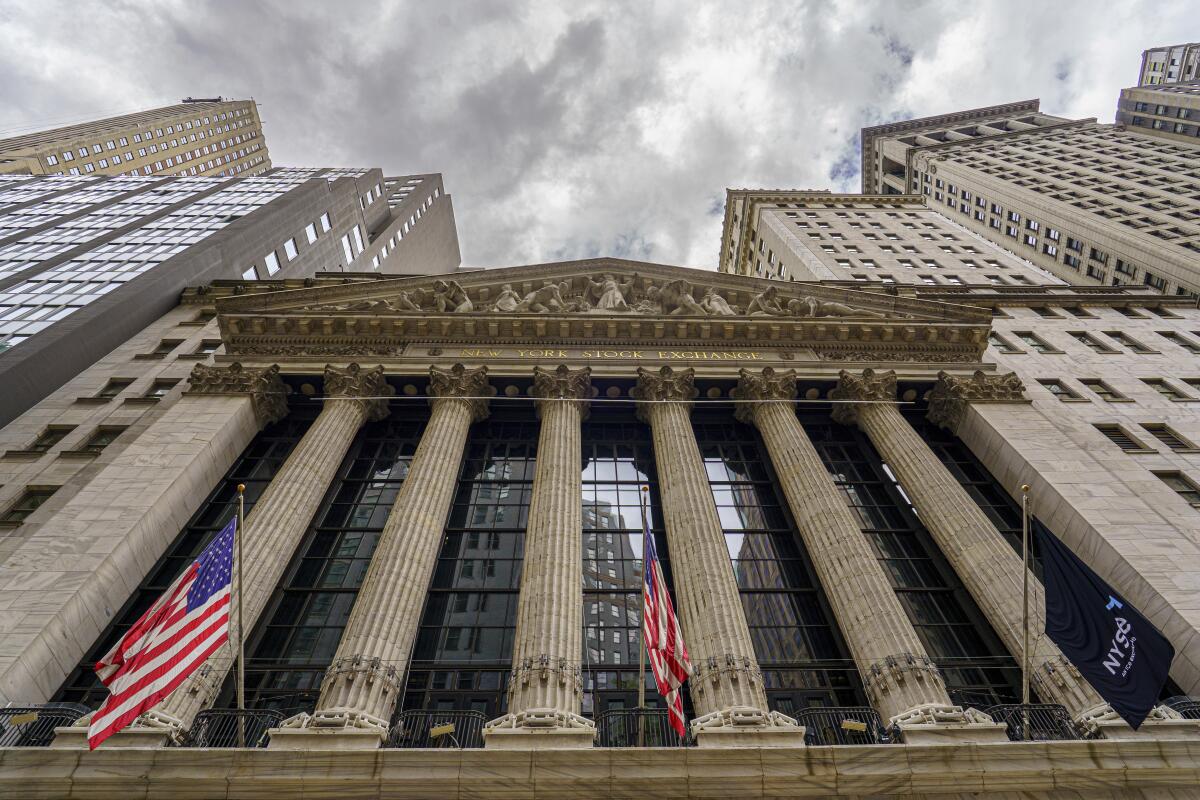Wall Street drifts higher ahead of a big week for retailers

- Share via
Wall Street drifted higher Monday ahead of a week of reports showing how strong U.S. shoppers remain, amid hopes their spending can keep the economy out of a recession.
The S&P 500 added 25.67 points, or 0.6%, to close at 4,489.72, though slightly more stocks fell than rose within the index. The Dow Jones industrial average edged up 26.23 points, or 0.1%, to 35,307.63 in a quiet day of trading. The Nasdaq composite gained 143.48 points, or 1.1%, to end at 13,788.33.
U.S. Steel jumped to one of the market’s biggest gains, up 36.8%. It said over the weekend that it rejected a buyout offer from Cleveland-Cliffs and that it’s heard multiple offers.
Cleveland-Cliffs rose 8.8% after it said that it offered more than $7 billion in cash and stock for the steelmaker and that it’s ready to move on the offer immediately.
On the losing end of Wall Street was Nikola, which sank 6.7%. The zero-emissions truck company recalled more than 200 of its electric vehicles after an investigation indicated that a problem with a component in the battery pack could be the cause of a previous fire. It had earlier raised the suggestion of foul play in the truck fire at its headquarters.
Across the rest of the market, trading was relatively quiet. The S&P 500 has given up 2.2% in August after soaring 19.5% through the first seven months of the year. Critics have been saying such a pullback was due, arguing that Wall Street too quickly and forcefully latched onto the belief that inflation would continue to cool and the economy would avoid a recession.
Some teachers are turning to social media to afford supplies and help make their classrooms more equitable.
A big bulwark keeping the economy afloat has been strong spending by U.S. consumers, which has been propped up by a resilient job market.
On Tuesday, the U.S. government will give the latest monthly update on sales at retailers across the country. Economists say it’s one of the week’s most important reports, and they expect it to show that growth accelerated to 0.4% in July from 0.2% in June.
Several big retailers are also on the schedule this week to show how much profit they made from April through June. Home Depot, Target, TJX and Walmart will all be reporting this week, as earnings reporting season for the spring reaches its tail end.
Inflation has been moderating since hitting a peak last summer, but it remains high and is affecting Americans of all incomes.
Conditions may be getting only tougher in upcoming months as rising interest rates make credit card and other payments more expensive. Student loan payments will also weigh on consumers, and many have been spending down savings that had built up during the pandemic.
Despite more than a year of widespread warnings that a recession was near, America’s economy is, if anything, accelerating.
Economists at Deutsche Bank say their expectations for a stumble in consumer spending during the last three months of the year are a big reason for their forecast of a mild recession lasting through the first half of next year. But they also say the resilience of U.S. consumers so far has raised the probability of no recession.
The week’s other big economic highlight will be Wednesday’s release of the minutes from the Federal Reserve’s last meeting. At that meeting, the central bank raised its main interest rate to the highest level in more than two decades. It was the Fed’s 11th increase in 17 months as it tries to corral the worst inflation since the 1980s.
The hope on Wall Street is that that will prove to be the final hike of this cycle and that the next move for the Fed will be to cut rates. That would provide some relief because high rates work to lower inflation by bluntly slowing the entire economy and hurting prices for stocks and other investments.
Traders broadly expect the Fed to hold rates steady at its next meeting in a little more than a month, according to data from CME Group. They also have some bets saying the Fed will begin cutting rates early next year.
That could prove to be too optimistic, according to David Mericle, economist at Goldman Sachs.
He’s forecasting rate cuts could begin in spring 2024, from April through June, as the Fed waits for inflation and the pressure pushing upward on it to ease enough. One potential hiccup could be that the Fed does not want rate cuts to boost prices for stocks and other investments too much.
Mericle said he still sees less risk of a recession than the market generally.
In the bond market, the yield on the 10-year Treasury rose to 4.19% from 4.16% late Friday. It helps set rates for mortgages and other important loans.
The two-year Treasury yield, which moves more on expectations for the Fed, rose to 4.96% from 4.90%.
Consumers are switching grocery stores, brands and ingredients as they try to cope with the cost of food.
In stock markets abroad, indexes were mixed in Europe after mostly falling in Asia.
China’s waning economic recovery remains a focus for many investors, and stocks fell 1.6% in Hong Kong and 0.3% in Shanghai.
AP writers Matt Ott, Joe McDonald and Alex Veiga contributed to this report.
More to Read
Inside the business of entertainment
The Wide Shot brings you news, analysis and insights on everything from streaming wars to production — and what it all means for the future.
You may occasionally receive promotional content from the Los Angeles Times.













